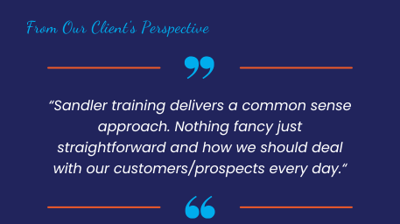Communicate with Intention, Connect with Impact
As sales professionals, we often focus heavily on what we say. We craft the perfect pitches, rehearse our rebuttals, and meticulously prepare our talking points. But what if we told you that the actual words you use account for a surprisingly small percentage of your communication's impact?
According to the sources, a mere 7% of communication impact comes from the words themselves, while a staggering 57% is attributed to non-verbal communication (body language) and 35% to tonality. This means that how you communicate is significantly more important than what you communicate.
Differentiation is Key: Break Through the Noise
In today's environment, many prospects hold negative perceptions of salespeople. To cut through this noise and make a real connection, differentiation is crucial. One powerful technique is the use of pattern interrupts. These involve doing the unexpected that aren't typically in a salesperson's self-serving interest.
Think about it: How many times have you received a generic sales call? A pattern interrupt shakes things up and grabs attention. For example, honestly acknowledging it might not be the right time for the prospect or even suggesting they have reservations about moving forward. Tonality and body language used during a pattern interrupt are critical to avoid appearing aggressive.
The Silent Language: Mastering Non-Verbal Communication
The overwhelming impact of non-verbal communication cannot be ignored. Your body language and tone of voice convey engagement, even during phone calls. Emphasizing different words within a sentence can dramatically alter its meaning. Sales leaders, ensure your teams understand the importance of projecting confidence and sincerity through their non-verbal cues. Salespeople, be mindful of your posture, eye contact (even virtually), and the inflection in your voice.
Unlock Communication Superpowers: Understanding DISC Profiles
The DISC model is a valuable tool for understanding different behavioral styles. Recognizing these styles in your prospects and adapting your own approach accordingly can significantly improve rapport and results. Here's a quick overview:
- D - Direct, results-oriented, values control and winning. When interacting with a "D," be brief, focus on results and the bottom line.
- I - Social, talkative, values recognition and fun. Engage "I" styles by being enthusiastic and focusing on people and stories.
- S - Supportive, relationship-focused, values harmony. With "S" styles, take time to build trust, and be genuine and patient.
- C - Analytical, detail-oriented, values accuracy. When dealing with "C" styles, provide data and details, and give them time to analyze.
- Understanding your own DISC profile is the first step. From there, practice recognizing the styles of your prospects and consciously adjusting your communication to match. This adaptability, while requiring practice, leads to stronger connections and better sales outcomes.
Conclusion: Communicate with Intention, Connect with Impact
Moving beyond a focus on words allows you to tap into the powerful realms of non-verbal communication and tailored behavioral approaches. By incorporating pattern interrupts, mastering your body language and tone, and adapting to different DISC styles, you can differentiate yourself, build stronger rapport, and ultimately, enhance your sales effectiveness. Start practicing these techniques today and witness the positive impact on your interactions and results.
► Additional Resource: 5 Secrets to Sales Success Using DISC






